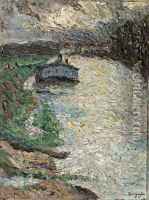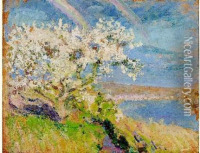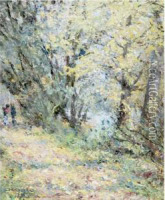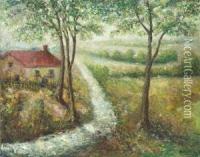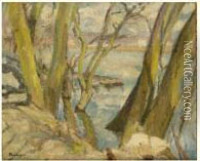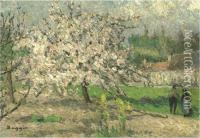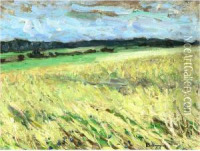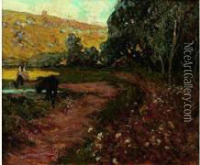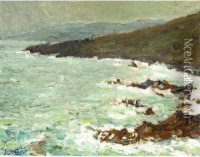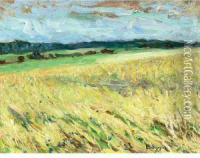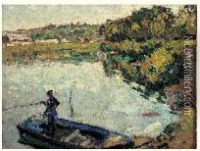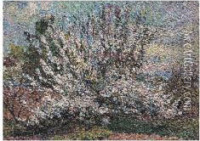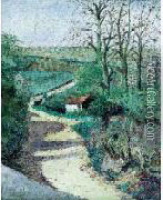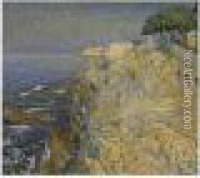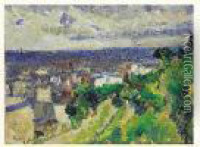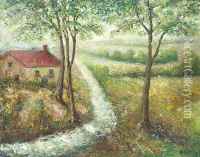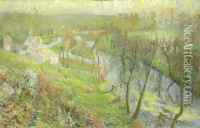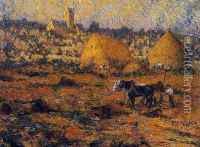Emilio Boggio Paintings
Emilio Boggio was a Venezuelan-born painter who later became a significant figure in the French Impressionist movement. He was born on May 7, 1857, in Caracas, Venezuela, and at a young age, he moved to Paris, France, to pursue his artistic education. Boggio enrolled in the École des Beaux-Arts and studied under Jean-Léon Gérôme, a prominent academic painter of the time. Despite this traditional training, Boggio was greatly influenced by the burgeoning Impressionist movement, which emphasized loose brushwork, vibrant colors, and the effects of light.
Throughout his career, Boggio developed a style that married his academic training with the Impressionist techniques. He was particularly adept at capturing the atmospheric conditions of the landscapes he painted, often depicting the French countryside. His works are characterized by a delicate treatment of light and shadow, often focusing on the changing times of day and the seasons, which was a hallmark of Impressionist art.
Boggio lived in France for most of his life, though he maintained strong ties to his homeland of Venezuela and occasionally returned to visit. He became friends with other notable artists of the time, such as Camille Pissarro and Paul Cézanne, who also influenced his artistic development. He exhibited his work at various salons and galleries throughout France and received recognition for his contributions to the art world.
In addition to landscapes, Boggio also painted still lifes, portraits, and scenes of daily life. His work often reflects a sense of tranquility and a deep appreciation for nature, resonating with the sentiments of many Impressionist painters who sought to capture the essence of the world around them in their art.
Emilio Boggio died on June 7, 1920, in Ermont, a suburb of Paris, France. His legacy is preserved in the form of his numerous paintings, which continue to be appreciated by art enthusiasts and collectors. Boggio's work represents an important bridge between the artistic traditions of Venezuela and the innovations of European Impressionism, making him an important figure in the history of both Latin American and French art.
